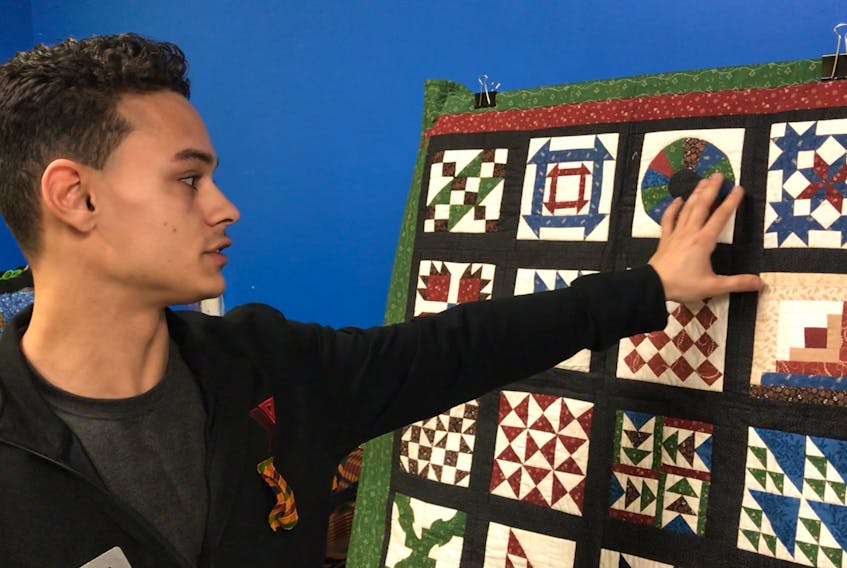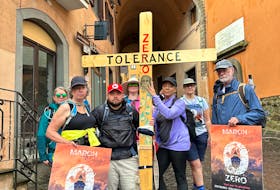A homey-looking quilt on display at Pictou County Wellness Centre told the harrowing story of slaves fleeing on the Underground Railroad to Canada through its shapes and patterns.
The quilt was one of several on display Saturday for African Heritage Month in Nova Scotia, telling the story of how black slaves escaped plantations in the United States in the 19th Century, risking a dangerous journey north to freedom.
“On it is symbolization codes letting the [slaves] know in times of need whether or not to take precautions and where to travel,” said Damiane Lawrence, who showed The News around the exhibit.
The different symbols stitched onto the quilt by artist Myla Borden were a means of communicating messages and warnings to escaping slaves.
For example, the “bow tie” symbol, a series of black and white triangles, was a warning to travel in disguise or change into higher-status clothing worn by free people to avoid being spotted and recaptured.
The “shoofly” symbol was a black square surrounded by triangles that identified a person who could guide travelers and knew the codes used on the railroad.
The Underground Railroad was in fact an entire network of routes leading to Canada and Mexico including safe houses, meeting points and secret pathways.
Abolitionists and other allies helped escaped slaves reach Canada, then a British-ruled territory where slavery was outlawed.
Escapees on the “railroad” typically travelled at night on foot or in wagons, only sometimes using boats or actual trains. By day they would rest in safe houses, which could be barns, caves, or underneath church floors.
While many believe quilts were used to guide slaves, the theory is disputed by some.
What is known is that between 30,000 to 100,000 escaped slaves made it to Canada via the railroad.
Many slaves settled in Ontario, but a number made it to Nova Scotia and settled in communities like Africville, now a part of Halifax.
Among Borden’s other quilts was a depiction of Africville with its historic church.
Its population included Black Loyalists and their descendants who settled in Canada after the American Revolution, as well as former slaves.
“Africville was founded by black settlers of many origins,” said Lawrence.
The community was bulldozed in the late 1960s to make way for expanded port facilities and the MacKay suspension bridge linking Halifax and Dartmouth.









